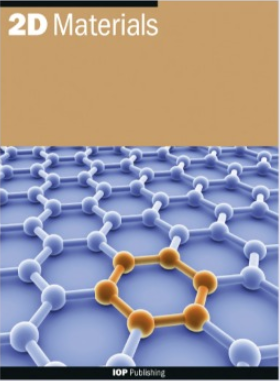Two-dimensional iron oxide/graphene-based nanocomposites as high-performance solid lubricants
IF 4.3
3区 材料科学
Q2 MATERIALS SCIENCE, MULTIDISCIPLINARY
引用次数: 0
Abstract
Beyond conventional 2D layered materials such as graphene and transition metal dichalcogenides, 2D metal oxides have also received much interest in recent years. They have unique electronic (such as 2D TiO2 and MoO2), catalytic (such as 2D CeO2 and MnO2), and magnetic properties (such as 2D Fe2O3) compared with bulk metal oxides due to their atomically thin structures. Certain types of 2D metal oxides also have the potential to be a new type of high-performance solid lubricants due to the tunable interlayer interaction and possibility for 2D heterostructure formation, but this remains largely unexplored. In this work, we developed a scalable microwave-assisted solid-state synthesis of 2D Fe2O3 and their nanocomposites with reduced graphene oxide (rGO). The 2D Fe2O3/rGO nanocomposites were systematically characterized by electron microscopies and spectroscopies, and their utilization as solid lubricants was studied by pin-on-disk tribometer on both silicon and steel substrates. The results show that due to the easy sliding between 2D Fe2O3 and rGO nanosheets and their unique magnetic-induced assembled morphology, low coefficient of friction (COF) can be achieved for both steel-silicon and steel-steel interfaces. Superlubricity (COF ∼ 0.007) can be achieved for the 2D Fe2O3/rGO nanocomposite with a GO primer layer on a steel substrate. This work provides new insights into the development of functional 2D nanocomposites and expands their applications to solid lubrication and beyond.作为高性能固体润滑剂的二维氧化铁/石墨烯基纳米复合材料
除了传统的二维层状材料(如石墨烯和过渡金属二卤化物),二维金属氧化物近年来也受到了广泛关注。与块状金属氧化物相比,二维金属氧化物具有独特的电子性能(如二维 TiO2 和 MoO2)、催化性能(如二维 CeO2 和 MnO2)和磁性能(如二维 Fe2O3),因为它们的结构非常薄。某些类型的二维金属氧化物还具有成为新型高性能固体润滑剂的潜力,因为它们具有可调的层间相互作用和形成二维异质结构的可能性,但这在很大程度上仍未得到探索。在这项工作中,我们开发了一种可扩展的微波辅助固态合成二维 Fe2O3 及其与还原氧化石墨烯(rGO)的纳米复合材料。我们通过电子显微镜和光谱对二维 Fe2O3/rGO 纳米复合材料进行了系统表征,并用针盘摩擦磨损仪研究了它们在硅基底和钢基底上作为固体润滑剂的应用。结果表明,由于二维 Fe2O3 纳米片和 rGO 纳米片之间的易滑动性及其独特的磁诱导组装形态,钢-硅界面和钢-钢界面都能实现较低的摩擦系数(COF)。二维 Fe2O3/rGO 纳米复合材料与钢基底上的 GO 底漆层可实现超润滑性(COF ∼ 0.007)。这项研究为开发功能性二维纳米复合材料提供了新的视角,并将其应用拓展到固体润滑及其他领域。
本文章由计算机程序翻译,如有差异,请以英文原文为准。
求助全文
约1分钟内获得全文
求助全文
来源期刊

2D Materials
MATERIALS SCIENCE, MULTIDISCIPLINARY-
CiteScore
10.70
自引率
5.50%
发文量
138
审稿时长
1.5 months
期刊介绍:
2D Materials is a multidisciplinary, electronic-only journal devoted to publishing fundamental and applied research of the highest quality and impact covering all aspects of graphene and related two-dimensional materials.
 求助内容:
求助内容: 应助结果提醒方式:
应助结果提醒方式:


